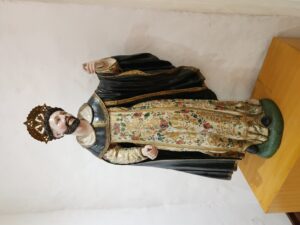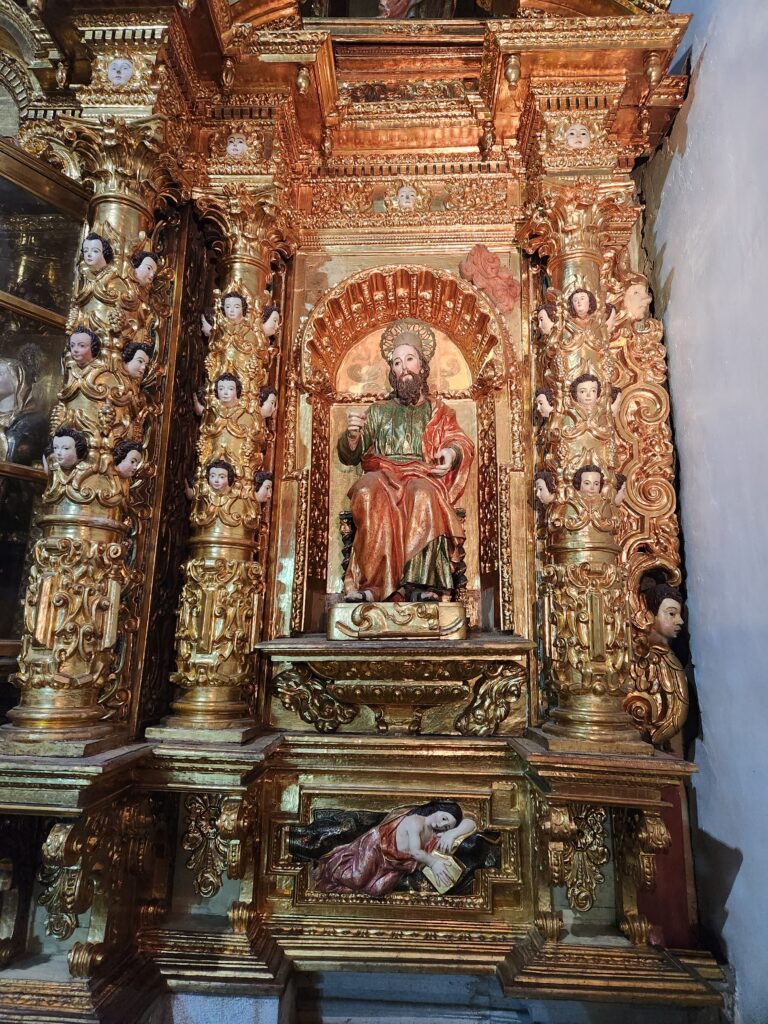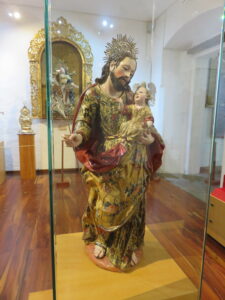Caspicara, cuyo nombre real se desconoce, fue un destacado escultor y tallador indígena de la Escuela Quiteña del siglo XVIII, nacido en Quito hacia 1720. Su seudónimo artístico, que significa “cara de madera”, refleja la fuerza expresiva de su obra. Discípulo de Bernardo de Legarda, heredó de él el sentido de armonía y espiritualidad, pero desarrolló un estilo propio, caracterizado por la serenidad, la perfección técnica y la expresividad de sus figuras. Falleció alrededor de 1796, dejando un legado de gran valor artístico y religioso.
Su dominio de la anatomía humana, la policromía, el estofado y el trabajo con la gubia lo consolidaron como uno de los mayores genios de la escultura colonial. Fue uno de los pocos artistas en representar grupos de figuras humanas con notable profundidad y equilibrio, además de realizar miniaturas con un virtuosismo excepcional. Sus obras se distinguen por la elegancia y un perfeccionismo extremo, lo que lo colocó entre los nombres más grandes del barroco americano.
Entre sus obras más destacadas se encuentran la Asunción de la Virgen y la Coronación de la Virgen María en la iglesia de San Francisco, el Cristo yacente y la Virgen de la Luz en el Museo Nacional de Quito, así como las Virtudes Teologales en la Catedral Metropolitana. También sobresalen piezas como La Sábana Santa, El Señor atado a la Columna y Las Postrimerías del Hombre, hoy resguardada en la Hispanic Society of America en Nueva York. Estas creaciones consagraron a Caspicara como el máximo exponente indígena de la escultura barroca quiteña.


Caspicara, whose real name is unknown, was a prominent indigenous sculptor and carver of the Quito School of the 18th century, born in Quito around 1720. His artistic pseudonym, which means «wooden face,» reflects the expressive power of his work. A disciple of Bernardo de Legarda, he inherited his sense of harmony and spirituality, but developed his own style, characterized by serenity, technical perfection, and the expressiveness of his figures. He died around 1796, leaving behind a legacy of great artistic and religious value.
His mastery of human anatomy, polychromy, etching, and gouge work established him as one of the greatest geniuses of colonial sculpture. He was one of the few artists to depict groups of human figures with remarkable depth and balance, in addition to creating miniatures with exceptional virtuosity. His works are distinguished by their elegance and extreme perfectionism, placing him among the greatest names in the American Baroque.
Among his most notable works are the Assumption of the Virgin and the Coronation of the Virgin Mary in the Church of San Francisco, the Recumbent Christ and the Virgin of Light in the National Museum of Quito, and the Theological Virtues in the Metropolitan Cathedral. Other notable pieces include The Holy Shroud, The Lord Tied to the Column, and The Last Days of Man, now housed at the Hispanic Society of America in New York. These creations established Caspicara as the foremost indigenous exponent of Quito Baroque sculpture.

